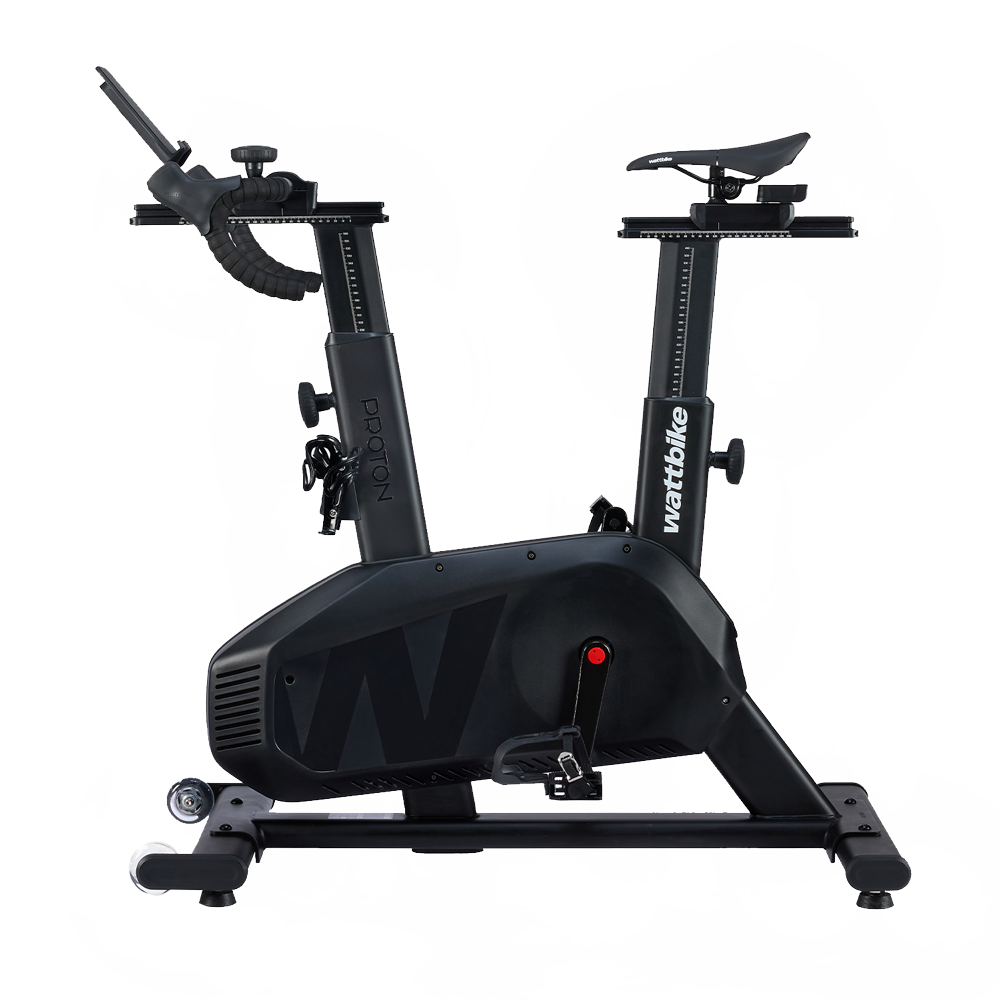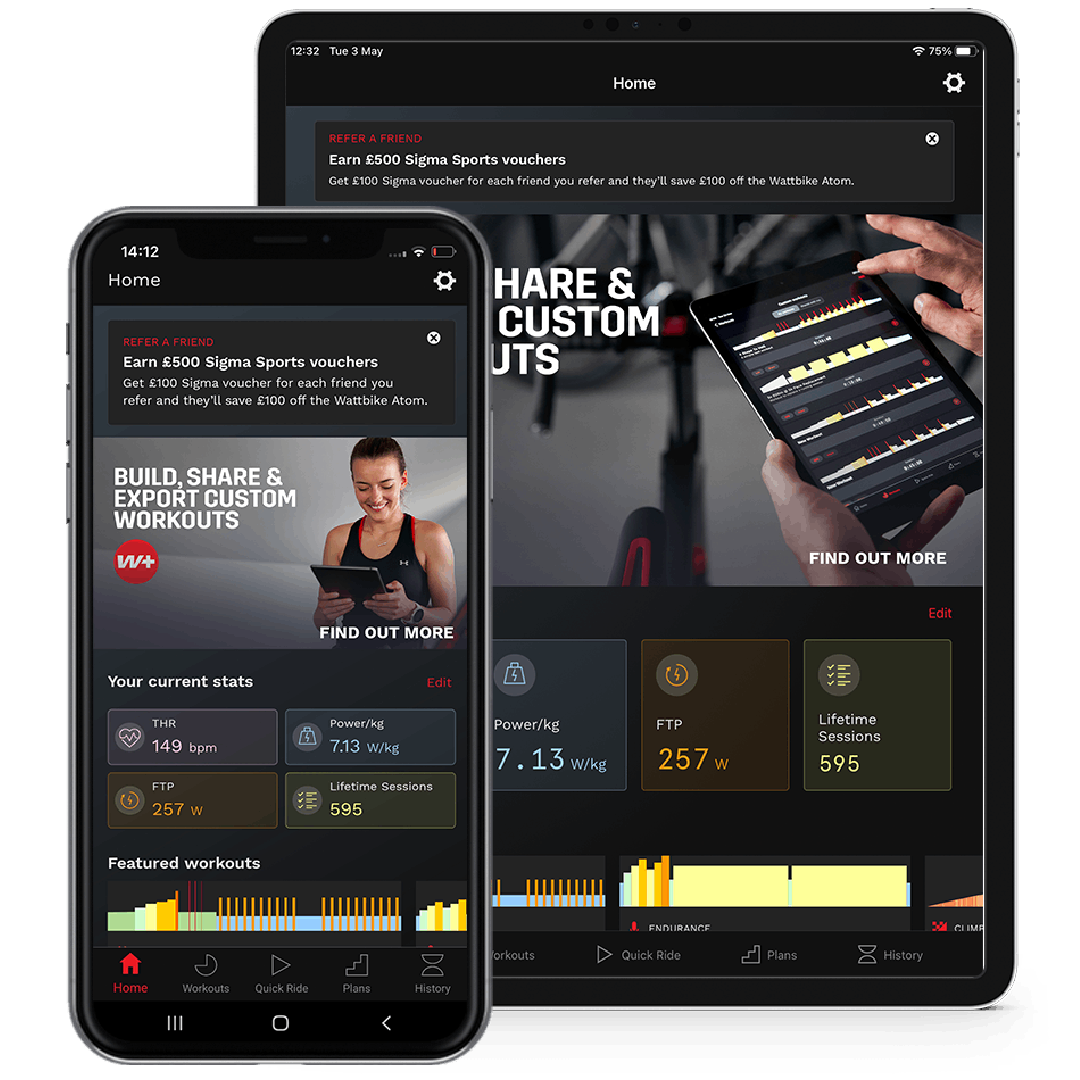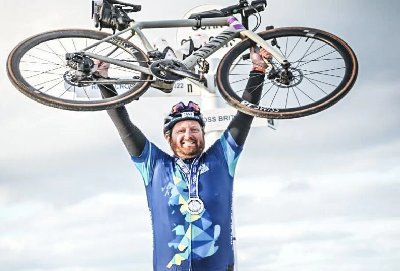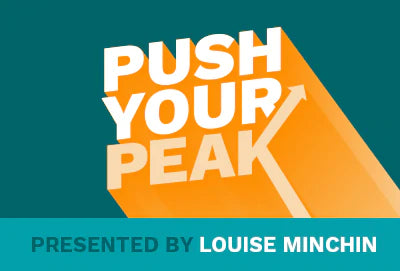Your Cart is Empty
shop
training & apps
support & services
news & information
JAMES GOLDING - ONE STEP AT A TIME
July 05, 2023 9 min read
You might know James Golding for his ultra distance undertakings on the bike. Surviving cancer twice – first diagnosed in 2008 – James took to the bike to regain his fitness and regained his passion for the freedom cycling offered.
In the wake of a devastating diagnosis, James saw an opportunity for a reset. He left his job and began pursuing a life on two wheels – and broke a Guinness World Record as a result.
Last year saw James’ long-held goal of winning Race Across America go awry. But that’s not stopped him from moving forward. What can we learn from Golding about goal setting, and how has being a Wattbiker helped him in his life as it is now?
“I started off on a Pro, back in 2012. At the time it was futuristic, in terms of indoor training tech. I've still got it, but I've also got an Atom now as well.
It wasn't an exercise bike, which was about as good as we'd got at the time, apart from turbo trainers. It was a standalone tool for training, which was and still is hugely appealing to many people. You don't have to use your own bike that you're going out on the road with, or have a spare ‘turbo bike’. And while I'm not a massive fan of data, I do appreciate it for what it can be used for. It has always given a different level of data to anybody else, in terms of technique and how you were riding.

CONNECT WITH YOUR COACH – QUALITY OVER QUANTITY
A lot of people will say, my coach has told me that I have to do this, or they’re not happy because I didn't do that. And I think, why are you working with them? They're just telling you what to do.
The relationship that I have with my coach, Dean (Downing, former pro cyclist, British Champion, and three-time winner of the Lincoln GP), that he has with all of his riders, he's very collaborative. He’ll ask, what time do you have this week to put into your training session?
My life's changed over the last year, from the prep that we were doing for Race Across America, being able to ride seven hours a day. If I’ve got a lot of work on, I'll tell him that and we'll plan accordingly, riding a structured set on the Wattbike – Dean's got one too – so he’ll put those sessions in and I'll go and recreate it in the app.
One of the beauties of the Wattbike has always been that you can jump on and do an hour, even half an hour, and you knew you'd done it. It's a real love/hate relationship. I don't think there's anybody who owns one who wouldn’t say the same.
NOT JUST A TRAINING TOOL
More recently, if I was on the Atom, it would be for an hour with some of the people that I work with. We do Zwift or RGT rides on a weekly basis, and I've always used the Wattbike to be able to do those sessions.
When we weren't able to do in-person sessions, we took everything online and started doing two rides a week, using Discord or another platform to be able to chat with one another. And it started to create this digital community.
Now things have opened up again, that digital community has dropped off a little bit, but the in-person community hasn't regained its speed to where it was prior to the pandemic. It’s taking a bit longer to work out what that digital community looks like now. Because cycling has always been about communities.
One of the things that we need to do now within cycling – and I certainly think that what Wattbike is doing with The Hub is a move in the right direction – is how we create that digital community properly. Because sometimes when we've got our indoor kit and our indoor product, we miss that we're still able to connect and have that community we have outside.
WHATEVER COMES NEXT
In the build up to Race Across America we had ‘one step at a time’ as the strapline.
That's how I learned to walk, that’s how I recovered after cancer back in 2008. I've used that in everything I've done – everything we do, anything that we want to achieve, we can only do it one step at a time. We can never just jump to where we want to get to. There's always a path, and there’s a journey.
Race Across America was a six-year project. Four years of full-time training, two cancellations, two years of COVID, not knowing if we were going to get there at all. And I got there in the best shape of my life, and covered 398 miles in 22 hours. And then I was taken to hospital with COVID.
After that, I felt fine for a while. I did John O'Groats to Land's End with Threshold on the Ride Across Britain. I did Manchester to London with Morgan Stanley. I did London to Paris with Hot Chillee. And I did a number of other events, but fast forward to December and I'm standing at the Action Medical Christmas dinner in a room full of people thinking, why am I here?
I didn't feel like I'd achieved anything, I felt like I'd let a lot of people down. I felt lost. I didn't really know what I was meant to say. I didn't feel like I really had anything to contribute, or to talk about. I'd spent so long with this goal, this thing that I’d been driving towards, that I didn't want to turn around and jump straight in and go, that's next.
We did a big ride at the weekend, the European Ultra Championships – the Joe Barr 500 over in Ireland. That's 500 miles in 35 hours. But for now, I'm gonna let the physio put me back together, ride my bike and see where we go. There's a whole host of different things out there that we could go and do, but I don't think it's fair on my kids and on the family to be talking about what's next, what's the next challenge?
Maybe the next challenge should be going surfing with the little guy, Freddy, who's not little anymore, he's 11 now and basically lives in the fridge. There are some things up my sleeve, but I'm just taking it as it comes.
PUTTING THINGS IN PERSPECTIVE
Some people might say: you rode 300 miles at the weekend, why did you do that?
What's wrong with: because I wanted to? There doesn't always have to be a reason.
Sometimes it’s good to take a day. That was what we used to do. When I started riding back in 1991, I would go out on Sunday morning and the rule was: be home before it was dark. I didn't have a Garmin. It was a Cat Eye that would tell me what time it was, how fast I was going, how fast I'd been going, and how far I'd gone. That was it. And if you got lost in the middle of nowhere or had a puncture, you had 10p in your back pocket to ring home and get somebody to come and collect you.
Sometimes I say to people, if you've got a Garmin or a Wahoo or whatever, set it going, take it off your handlebars, lock the screen, stick it in your back pocket. I guarantee when you get home they will be the best numbers you've had in a very, long time. The lowest heart rate, the best power output, the best speed. Because you'll be riding to feel, riding to comfort, and that will make it one of the best rides you've ever had.
SETTING GOALS
Riding a bike is far more than just the challenges. Riding a bike for me is peaceful. It's part of my continued therapy. It's part of being able to keep focused. I'm able to sort my thoughts when I'm on a bike. I'm a better dad when I ride a bike. I'm a better person when I ride a bike. And riding a bike is going to be part of my life for the rest of my life. The real tough times I have in my life are when I'm not riding a bike.
Somebody said to me this morning, off the back of such a short period of time training since being back on the bike at the beginning of this year, to go and achieve what we did over the weekend, that was a huge achievement in mindset.
But the mindset for me is a strange one. I think we forget far too easily what we've been through to get to where we are, as humans, what we've achieved in our lives. We really underestimate what we've achieved as individuals and as a species to be able to get to where we are today. We learned to walk when we were babies. No textbook, no experience and by and large that is probably the most impressive thing we've done in our entire lives. So we've all got a strong mindset.
There are external influences that play on that, and pull us back in certain situations, or we let them pull us back in certain situations. By saying, right, this is it – this is my goal. Whatever it is: let’s say I'm going to go and climb Kilimanjaro. Okay, when? Set a timeframe, then you tell everybody that you're going to go and do it.
I said I wanted to be the first British rider to win Race Across America. And that wasn't about being cocky. That wasn't about saying that I was better than anybody else. That was about planting the mentality, a belief that the more people believed I had the ability to win Race Across America, the more chances we had of winning Race Across America.
But also the more people that believed and talked about me going to win Race Across America, the more I trained to win. The more I ate to win. The more I slept to win. And I knew that if I could get to Race Across America and I could get to the finish line and somebody else had beat me to it, I could still put my hand on my heart and say: I did my best.
In some respects, that's what we did. And that's what we did this weekend. Can I look at it now and go, could have, would have, should have? Yeah, I can. But am I happy with what happened over the weekend? Yeah. Because the weekend wasn't about a result. The weekend was about picking yourself up and getting back on the bike and going again.
One thing that I would say – and it's not trying to put anybody off – is that your expectations of an event or a challenge, the end or the aftermath will never be what you think it's going to be. You never plan for what that's going to be like, no matter how many times you do it. You're focused on getting to the start line – and ultimately we're capable of achieving anything that we want to – the work that we do between deciding we're going to go and do it and actually getting to go and do it. That's what will differentiate how easy, difficult or how much we enjoy that journey.
WORKOUT OF THE DAY
My least favourite indoor session is an FTP test. It's the longest 15 minutes of your life. In close second – maybe joint first – would be a ramp test. But they're equally bad.
My favourite? Under and over is the most beneficial, without a shadow of a doubt. In terms of fitness and strength growth, it’s definitely the best.
But one of the beautiful things that I really do like the Wattbike for is recovery sessions, they're perfect. You can just sit there on ergo, stick a film on the iPad, drop the saddle a little bit more than you would do normally, put the bars up a little bit and just turn the legs. And if you're sitting comfortably, you can watch a film and all of a sudden you've lost an hour, an hour and a half without even thinking about it.

WHATEVER COMES NEXT
No matter the goal, what's important for me is that I started off riding five miles around the local reservoir. I didn't just go and do 500 miles. I didn't just say, oh, I'm going to go and do Race Across America. I didn't just go and break a world record. It all started doing five miles around the local reservoir. Then it went to 10 miles, then 20, then a 50 mile charity ride, a 100 mile sportive. I found out that I enjoyed big miles, I felt more comfortable over longer periods, and I built from that.
The last thing I would want is people to think, that's a long way, how does he do that? The reason I share my story, and share the challenges is because I want it to inspire people. It's my story, but it's not about me. It's what you can take from it to influence your own life, to go and achieve those goals that you want to go and achieve. Whether that's climbing Kilimanjaro, Mount Everest, or doing a 5k park run on a Saturday morning.
I get just as much pride and satisfaction out of somebody turning around to me and saying, if I hadn't have heard you talk, I never would have signed up to that event. And that's the reason why I do what I do.
Also in Wattbikers
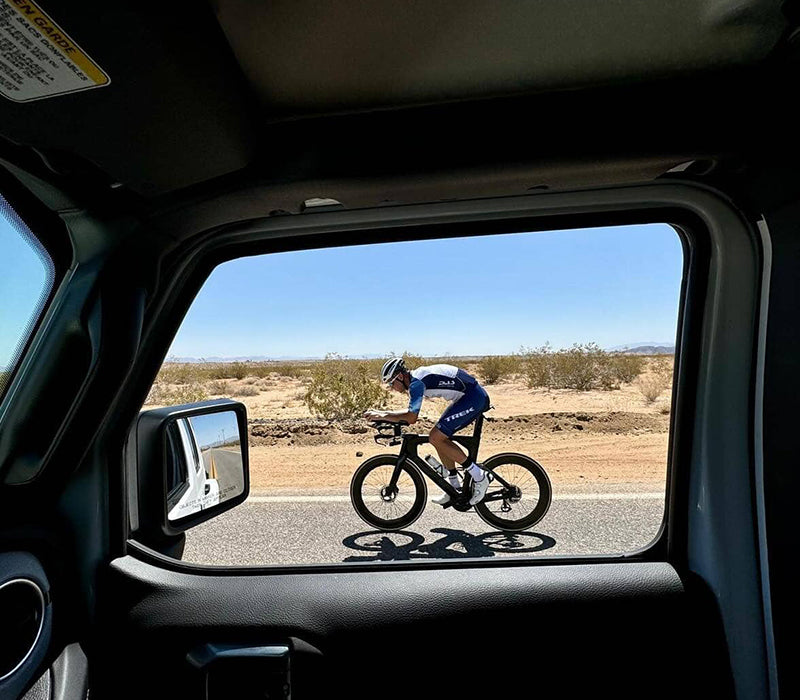
James Golding's Return to the Race Across America
June 10, 2024 3 min read
As June 2024 approaches, the cycling world turns its eyes to the Race Across America (RAAM), one of the most gruelling endurance challenges on the planet. This year, the anticipation is particularly high as British cyclist James Golding returns to the race with a bold mission: to become the first British rider to win RAAM. James's story is one of unparalleled resilience, determination, and an unyielding spirit that has inspired countless individuals around the world.
Read More
Roger Berry's Marathon Ride Raises Vital Funds
June 03, 2024 6 min read
In a remarkable feat of endurance and dedication, Roger Berry, a committed Wattbiker, recently completed a continuous 20-hour and 24-minute Wattbike session. This gruelling effort was all in the name of raising essential funds for the Great Marlow School Boat Club, a cause close to his heart. Covering an astounding distance of 450 kilometers, Roger's ride has drawn the attention of the Wattbike team, highlighting the spirit of determination and community support.

Be More Dexter
May 23, 2024 3 min read
Meet Dexter Rosier, a young cyclist whose determination and spirit are making waves both on and off the bike. Training on a Wattbike at his local leisure centre, Dexter is preparing for an incredible 230-mile ride to Paris, all in the name of supporting mental health awareness.
Read MoreGet the latest!
News, training tips, offers and more, straight to your inbox.




